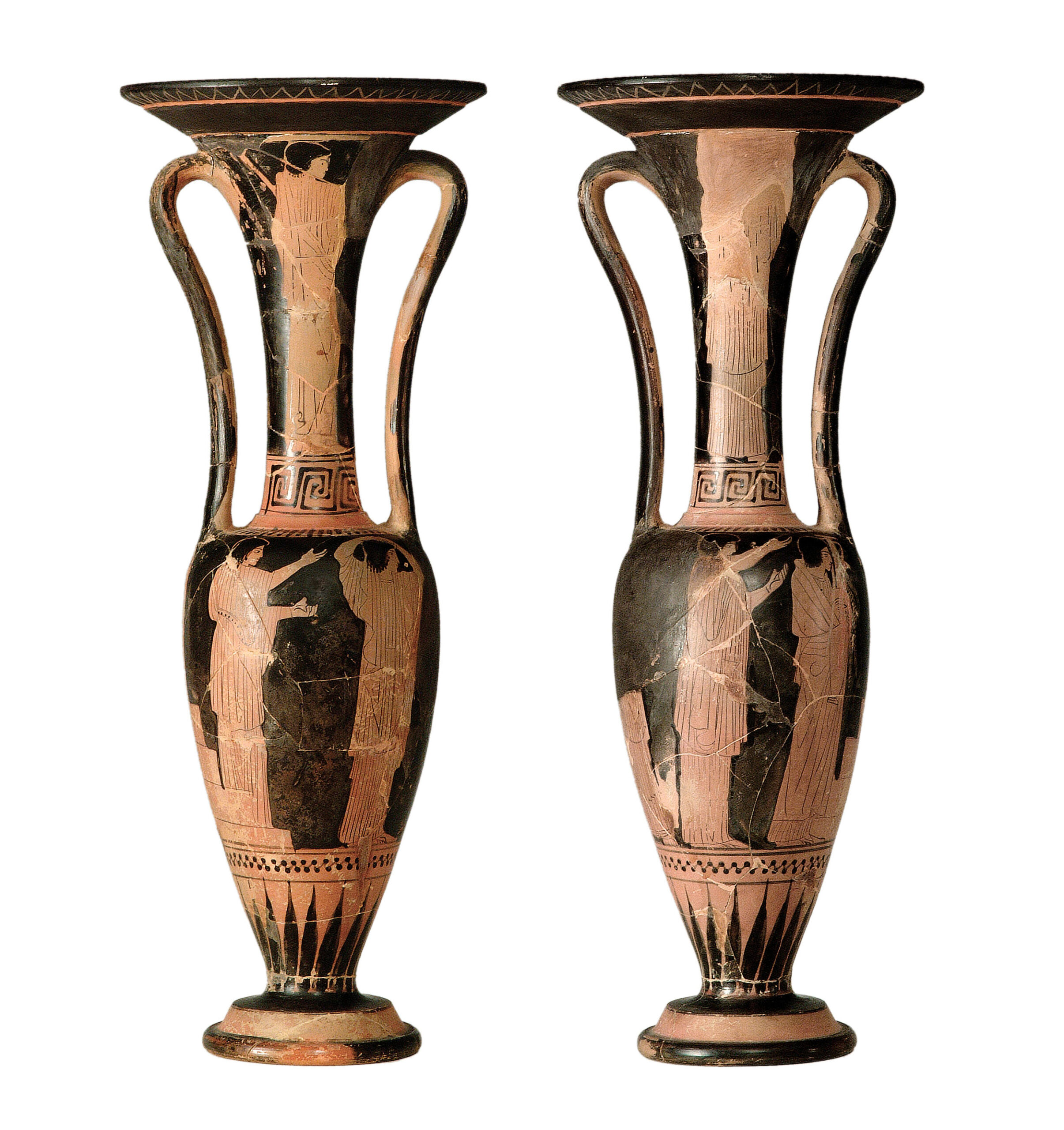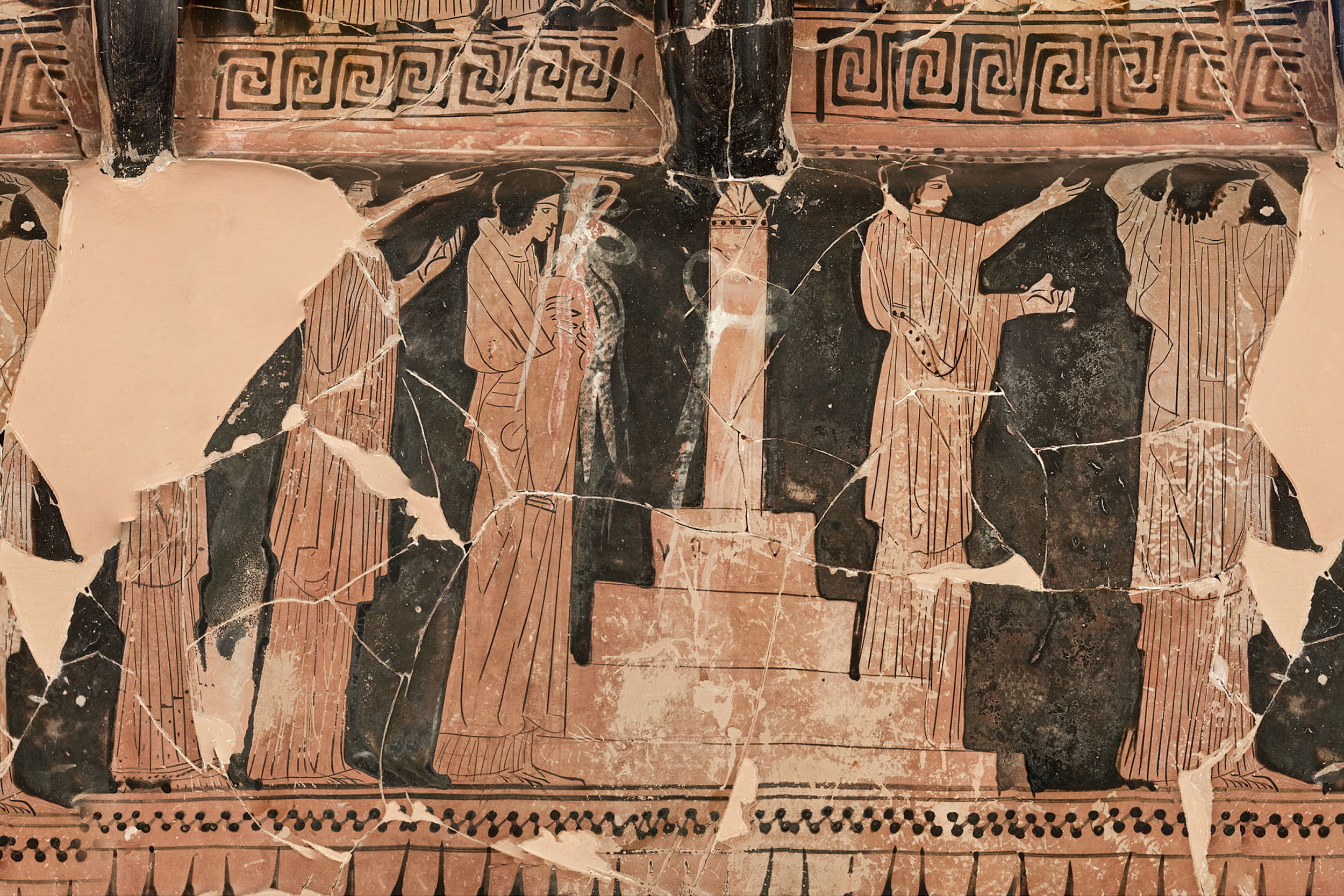



Οι λουτροφόροι ήταν πολύτελή αγγεια που σχετίζονταν με το γάμο. Σύμφωνα με τις πηγές, χρησίμευαν για τη μεταφορά νερού για το λουτρό της νύφης πριν τη γαμήλια τελετή. Χρησιμοποιούνταν, επίσης, και ως κτερίσματα σε ταφές νέων που πέθαναν άγαμοι. Μια τέτοια ταφική τελετουργία απεικονίζεται στη λουτροφόρο του Μουσείου Κανελλοπούλου.
Διακρίνονται πέντε γυναικείες μορφές γύρω από επιτύμβια βαθμιδωτή στήλη. Ο καλλιτέχνης έχει προσπαθήσει να αποδώσει το βάθος τοποθετώντας την πρώτη μορφή στα δεξιά πίσω από τις βαθμίδες του ταφικού μνημείου. Μία γυναίκα μεταφέρει λουτροφόρο για να την αποθέσει στον τάφο, ενώ οι υπόλοιπες κάνουν χαρακτηριστικές χειρονομίες θρήνου: η δεύτερη από αριστερά και η πρώτη δεξιά του μνημείου έχουν τα χέρια ανασηκωμένα σε στάση οδύνης, ενώ η δεύτερη δεξιά τραβά τα μαλλιά σε ένδειξη οδυρμού. Όλες οι μορφές έχουν τα μαλιά τους κομμένα κοντά, στοιχείο που συμβολίζει το βαρύ τους πένθος. Στο λαιμό του αγγείου εικονίζονται μια γυναικεία και μία ανδρική μορφή.
Η λουτροφόρος και η επιτύμβια στήλη ήταν στολισμένες με ταινίες από επίθετο χρώμα, που πλέον έχει χαθεί και απομένει μόνον το αποτύπωμά του.
ΔΗΜΟΣΙΕΥΣΗ
– Ζαρκάδας Α. 2006. Λήμμα καταλόγου αρ. 83, στο Χωρέμη-Σπετσιέρη Α. – Ζαρκάδας Α. (επιμ.), Μουσείο Παύλου και Αλεξάνδρας Κανελλοπούλου. Αρχαία Τέχνη, Αθήνα, 130-131.
– Ζαρκάδας Α. 2014. «Ερυθρόμορφη λουτροφόρος-αμφορέας», στο Σταμπολίδης Ν. – Οικονόμου Σ. (επιμ.), Eπέκεινα. Θ θάνατος και η μεταθανάτια ζωή στην αρχαία Ελλάδα, Αθήνα, 90-91, αρ κατ. 31.